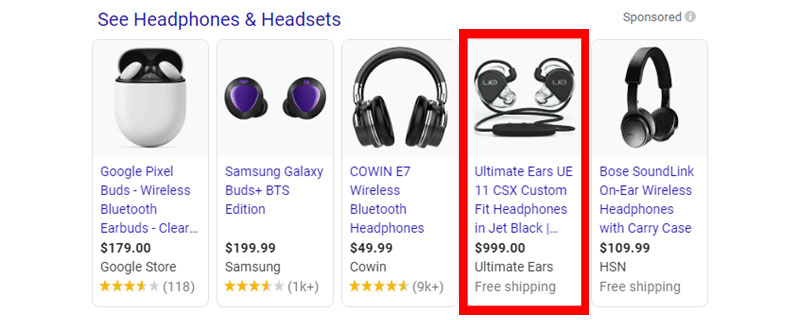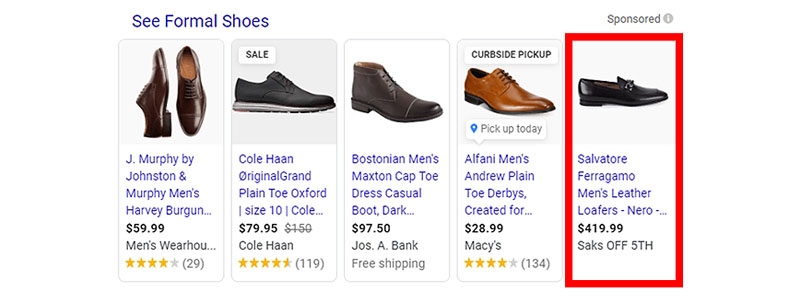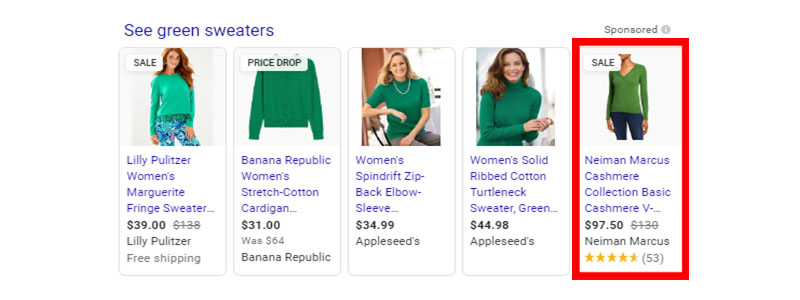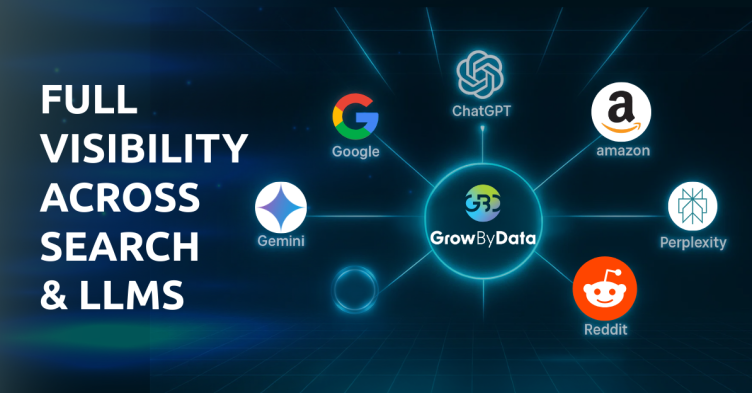“GrowByData Ad Intelligence, Price Intelligence, and Sales Revenue data collectively showed Competitive Pricing in Google Shopping equates to 16% lower Cost-per-Click and a 30% increase to Conversion Rate.”
Google Shopping Ads are a great way for advertisers to get in front of the customer, but it doesn’t help if your advertised product is not priced competitively. Without control and visibility into what’s being advertised, it’s literally impossible for advertisers to optimize for price in Google Shopping. After hearing this from several advertisers, we decided to see how our wealth of data and years of eCommerce experience can help solve this problem in the market.
What is a Price Anomaly on a Google Shopping Ad?
Price Anomalies are Google Shopping ads that have prices significantly higher or lower than the average prices in a given auction.
Let’s walk through an example: When a user searches for a product such as ‘headphones’ (Fig.1) and the auction shows 4 Google PLAs that are priced between $50 and $200 but one of the ads is priced at $999, what ad are they most likely NOT going to click?
An extremely small number of consumers will click on the $999 headphones. But it’s a very small, niche audience and not the average buyer, which makes up a majority of search traffic. To promote that product effectively, an advertiser needs to leverage audiences to ensure that the product shows up in front of a highly targeted group of consumers.
Fig.1

Our CAI Data which is tracking with Google Shopping monitoring solution, across many clients and categories has proven to us that the lower-priced items will drive more traffic at a lower Cost per Click and convert at a higher rate than the product shown here by Ultimate Ears.
Similarly, when a user searches for ‘formal shoes’ and sees 4 Google PLA ads for shoes that are for under $100 and one ad is for $419, the majority of consumers will pick one of the four less expensive options. Again, advertising high-priced items is okay – but it should really be within a well-targeted audience strategy.
Fig.2

How to optimize Google Shopping Ad Campaigns through Price Anomaly Detection?
When price anomalies are detected, advertisers can take the following actions:
- Filter out products and include them in a different product group.
- Adjust Bids: You can minimize the bid for this group and allocate the budget to a high-performing campaign.
- Optimize the product feed to other keywords.
If the ad with a price anomaly remains visible on Google ads and you don’t do anything, you increase the chances of experiencing lower traffic, lower conversion rates, and lower sales.
How do we lose Google Shopping Ads’ Visibility?
Losing Google Shopping Ad visibility means your products’ ads are not showing up for the search query even though your product matches the query. This could occur due to multiple reasons such as:
- Your product goes out of stock.
- Feed software filters out your product.
- Other advertisers outbid you.
Some steps you can take as an advertiser in the event you lose ad visibility are: make sure your product is in stock, make sure the product is not getting flagged as having data issues in Google Merchant Center, and for the ones that are good, increase the bid on the product to try and show up again.
How is Google Ad Visibility monitored by Ad Intelligence?
Google controls targeting Google Shopping ads queries, so tracking all kinds of anomalies is crucial for Google Shopping Ads Optimization. A competitive Ad intelligence tool sends you alerts when you lose ad visibility on search queries. It also helps you see your relative visibility (Google ad coverage) versus your competitors. And if one of your advertising goals is to own the category or be more visible than a specific competitor, our data provides insight and tracking towards that goal.
For example, if the search query is ‘green sweater’ and this is the ad auction that comes up –
Fig.3

If you are Neiman Marcus (highlighted in red in Fig.3) and your ad disappears, you will be alerted via email by GrowByData Search Intelligence Software stating your ad has disappeared for the keywords.
This gives you peace of mind to focus on advertising and selling while GrowByData’s ad intelligence tool monitors, tracks, and alerts you of ad visibility and price anomaly issues on Google Shopping ads.



